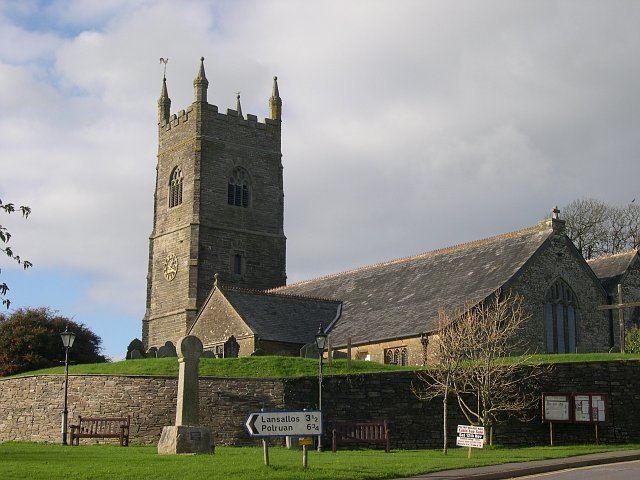Local time Sunday 3:06 AM | ||
 | ||
Weather 8°C, Wind NE at 29 km/h, 45% Humidity | ||
Pelynt (Cornish: Pluwnennys, Pluwnonna) is a civil parish and village in Cornwall, England, United Kingdom. It is situated 20 miles (32 km) west of Plymouth and four miles (6.5 km) west-northwest of Looe. Pelynt has a population of around 1,124 (2001 census),which increased to 1,296 at the 2011 census In addition an electoral ward with the same name exists but extends towards Widegates avoiding Looe at all times. The population at the 2011 for this ward was 4,453.
Contents
Map of Pelynt, UK
History
The name Pelynt derives from Cornish pluw (parish) and the name of Saint Non, the mother of St David.
The manor of Pelynt is mentioned in the Domesday Book (1086) when it was valued much higher than Looe; it was held by Algar from Robert, Count of Mortain. There was half a hide of land and land for 8 ploughs. There were three and a half ploughs, 6 serfs, 4 villeins, 12 smallholders, 30 acres of woodland, 40 acres of pasture, 2 cattle, 14 pigs and 37 sheep. The value of the manor was £1 sterling though it had formerly been worth £2-10s.
The parish church is dedicated to St Nonna and built in the Perpendicular style. In about 1680, one of the arcades was remodelled in Tuscan Doric style. The tower is of the 14th century, earlier than the rest of the church. There are a number of interesting memorials including that to Bishop Jonathan Trelawny, whose pastoral staff is preserved in the church. Other notable members of the locally resident Trelawny family are also commemorated.
The village has a school, founded in 1882, and a 16th-century inn, The Jubilee. There is an ancient barrow cemetery nearby: ten barrows still exist and others have been destroyed. The Rillaton Cup and the Pelynt Dagger are two artifacts that have been found in Cornwall that show contact with the Mycenaean Greek world.
The first mention of a post office in Pelynt was in May 1852, when a type of postmark known as an undated circle was issued. Details of some of the people who have run the post office, including William Churchill (1856), Harriet Andrews (1910) and Samuel Harvey (from 1929) appeared in a book published in 1988.
